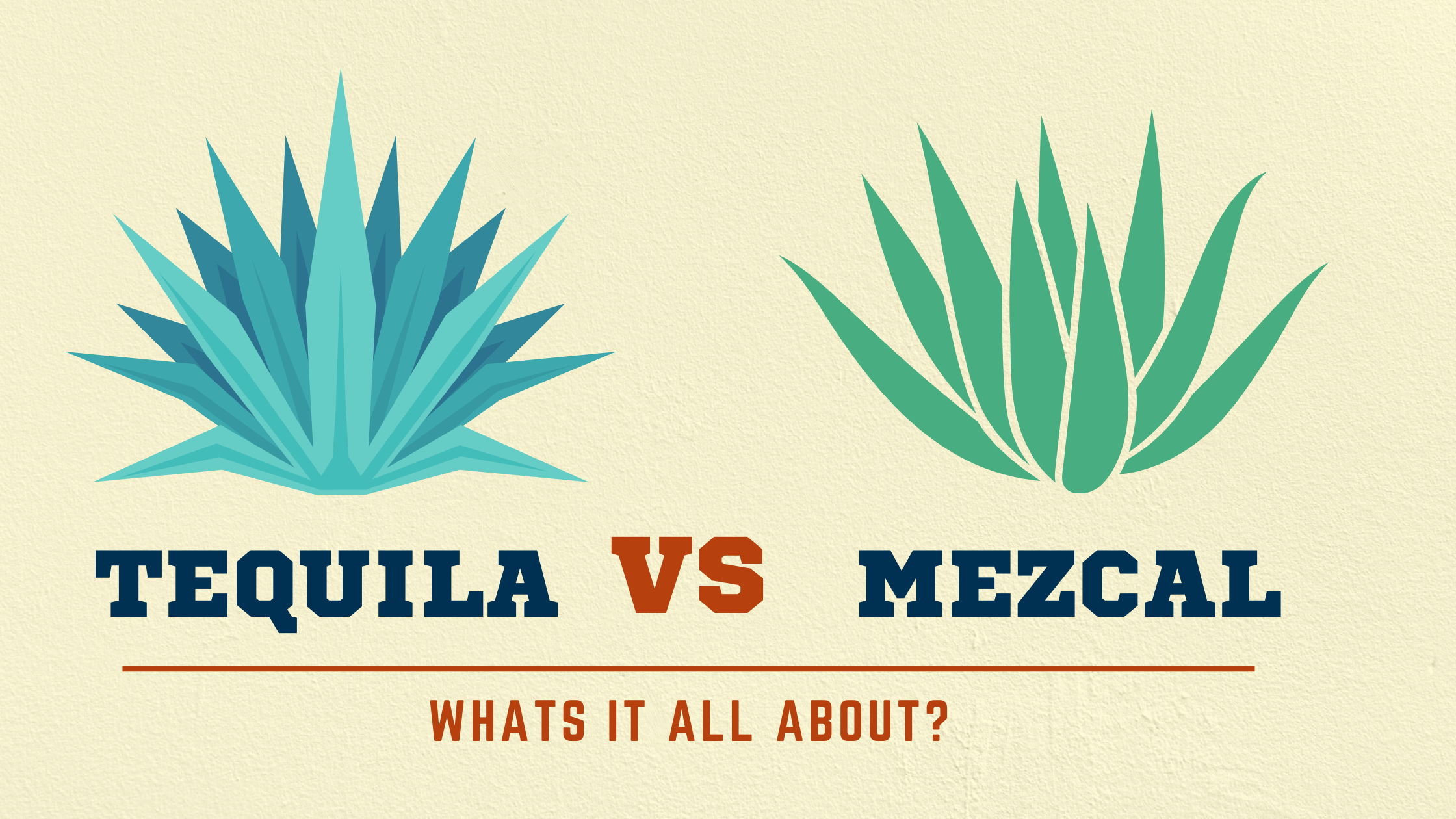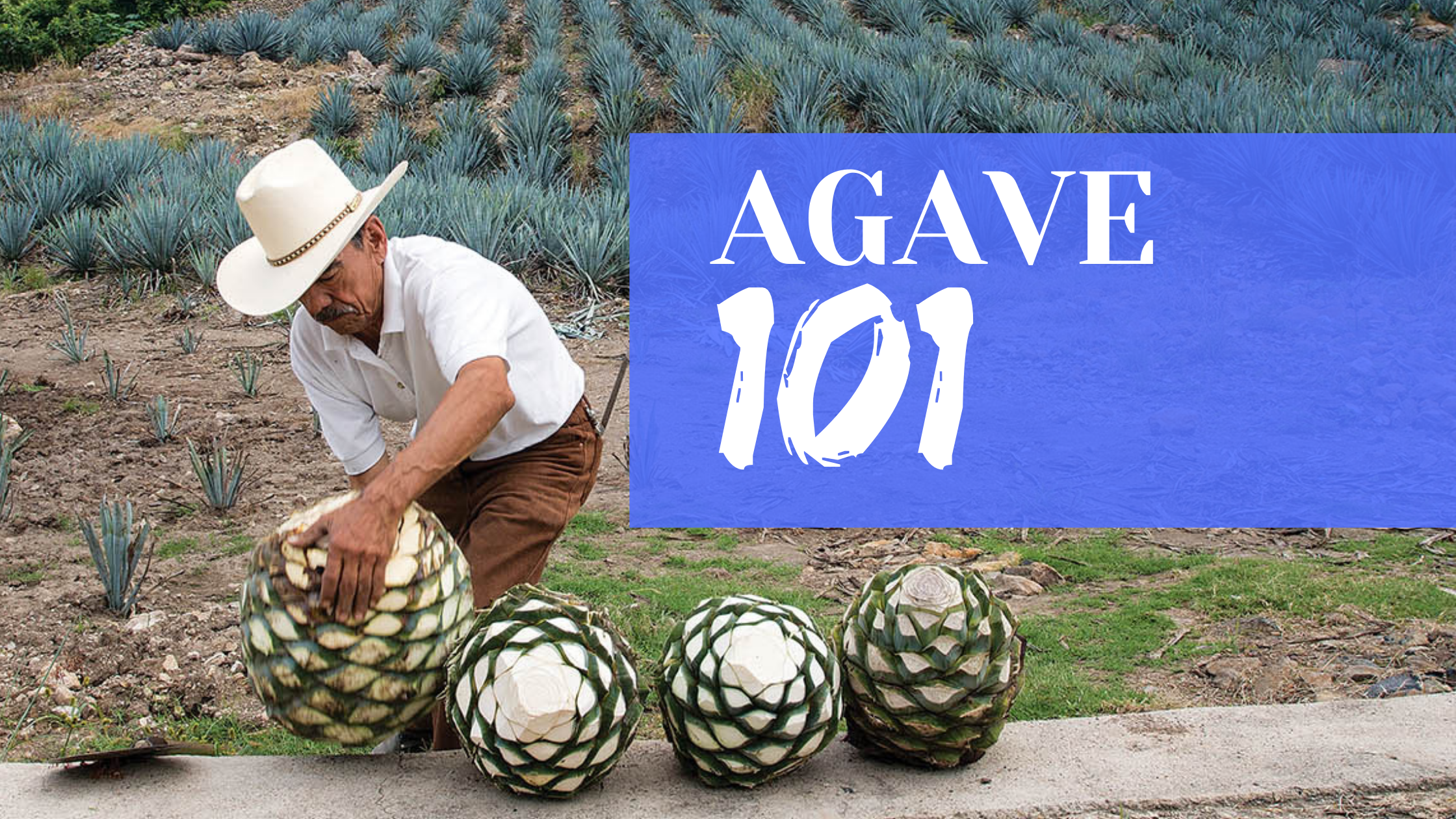What Is Tequila Made From? What Is Agave?
Agave - The plant that was worshipped by Aztecs, gave us Mezcal and Tequila and gave vegans an alternative to honey. This is the ultimate guide on agave. AKA, what is Tequila made from.
What is Tequila Made From?
Tequila is made from agave. A plant that’s made it’s home in Mexico and has a long history of folklore, myth, legend and much much more. In tequila production, this plant is roasted and milled to release the starches - the plants natural sugars.
It’s these sugars which are fermented and distilled creating a clear spirit that we know as tequila. For a better understanding on this process check out this article which goes into depth about what tequila is and the process involved. As for the rest of this article, we’ll stick with the plant itself - agave.
What is agave
The agave is a plant within the succulent family of plants. Native to hot climates, mainly south America, and with other 250 species, some being upwards of 10 feet tall and others being the size of a small bowl.
The main familiarities with agave we are used to are that of Tequila and other Mexican spirit products (i.e mezcal) and Agave nectar. Both of which very popular amongst bartenders.
Think of agave as looking like a cross between a pineapple and cactus.
They have rounded bulbous middles known as the pina or the heart, which are encased with large fleshy leaves similar to a pineapple or aloe vera.
Although there are many and I mean many varieties of agaves, there are 4 that are most popular and showcase just how different this plant can be.
Most popular agave species.
Century plant (Agave americana)
pictured: Century plant (Agave americana). image source.
Century plant (Agave americana): Known in Mexico as maguey, this agave produces a green or yellow flower stalk that can reach up to 15 feet in height at maturity, has blue-gray leaves with saw-toothed spines along the edges and a long terminal spine.
Artichoke agave (Agave parryi var. truncata)
pictured: Artichoke agave (Agave parryi var. truncata. image source.
Artichoke agave (Agave parryi var. truncata): is an evergreen, perennial succulent forming tight rosettes of broad, short, thick, silvery-blue leaves with reddish-brown teeth and terminal spines. While infrequent, mature plants (over 10 years) flower only once.
Blue agave (Agave tequilana)
pictured: Blue weber agave. image source.
Blue agave (Agave tequilana): Also known as blue-Weber agave or tequila agave, this large plant is what tequila is made with. It’s the only agave species that can be used in tequila making meaning all tequila is made from this agave. They grow large and take around 7-10 years to mature.
Queen Victoria agave (Agave victoriae-reginae)
pictured: Queen Victoria agave. image source.
Queen Victoria agave (Agave victoriae-reginae): One of the smallest species of agave growing about one foot tall at maturity and produces flowers after 20 to 30 years of growing. The queen Victoria forms rosettes of fleshy, spiny-edged leaves. They are mostly grown as houseplants.
Agave uses
Tequila
Pictured: Gran Patron Tequila.
Blue-weber agave which I mentioned about above is the main ingredient to creating tequila. Blue agaves are also known for having high concentrations of sugar and being a lot less herbal and earthy than other agaves, there softer tropical flavour is what makes tequila tequila, and for consistency is why its only blue-weber agave that can be used to create tequila.
For more on the production of tequila and how they turn this plant into alcoholic liquid, check out my full guide on tequila.
Check out Ocho 8 Blanco, a £21 tequila which is a great example of purity and agave forward flavour. That’s my favourite tequila for showcasing the taste of fermented and distilled blue agave.
For an expression of how great tequila really can be, check out Don Julio 1942, the smoothest and highest quality tequila I’ve personally ever tried, its a lot more expensive then Ocho being £279.99 but it sure is a tequila sipping experience you must try.
Mezcal
pictured: ilegal mezcal bottle. image source: Mezcal 101.
Mezcal is the second most popular agave spirit globally and in Mexico is even more popular than tequila. Similar in production to tequila however mezcal is not made with blue agave.
Which is one of the reasons mezcal has more of an earthy, flowery, herbal taste. Mezcal can be made from any of 25+ agave species widely found in Mexico which is why the flavour changes so much brand to brand.
Most popular of those agaves are;
Agave angustifolia (espadin), A. asperrima (maguey de cerro), A. weberi (maguey de mezcal), A. petatorum (tobala), and A. salmiana (maguey verde o mezcalero)
Other agave spirits produced in Mexico include Bacanora, which is made with pacifica agave and Raicilla, which is made with wild agave varieties such as chico agar and maximilana.
If you’re looking to taste Mezcal to see how it differs from tequila, there are a few I always recommend, firstly, try MVM Verde Momento Mezcal as its 100% Espadin agave, the most popular agave used in mezcal making and its only £39 which is a great price for mezcal.
For something more exclusive, try Pensador Especial, its more expensive at £49, however, it is a limited edition mezcal made with Tepextate agave, this PA1 batch comes from Felipe and Ageo Cortes - a father son team who distil in a refrescador still.
Finally, for an exclusive sipping experience, try Bozal Tobasiche. Made with 100% Tobasiche agave, an agave that takes between 12-13 years to mature. Its £75 but what you get for that is a completely unique and character full mezcal.
Agave nectar
pictured: agave syrup. image source.
Agave nectar is the sugar or ‘sap’ taken from agave plants. Much like honey or maple syrup. It’s often seen as the vegan alternative to honey due to viscosity, colour, and the fact that both have somewhat of an underline flower flavour to them.
Agave nectar, also known as Agave syrup or maguey syrup can be made with several agave species most popular being blue agave due to the already prominent sugar levels.
for UK based, I’d recommend trying this organic agave, it’s cheap, tasty and has an easy to use viscosity about it. For the America based, I’d go with this 100% blue organic agave for the same reasons.
Health benefits of agave
Research on this is varied. Some professionals say that agave is the least healthy option, some say it's the most healthy option. All I can do is lay down some of those possible benefits and let you decide. I’ve previously written an article on the surprising health benefits to tequila in which a lot is covered as agave being the main benefit.
It's low on the glycemic index (GI) . If you have diabetes, a low-GI diet may help you control your blood sugar.
It can help your metabolism. Vitamin B6 found in agave plays a big role in how your body breaks down food, particularly proteins and carbohydrates.
Good for when you’re pregnant. Vitamin B6 may also reduce morning sickness. Folate, which is also present in agave, helps develop your baby's nervous system.
It can help with depression. Vitamin K and folate in agave syrup may offer mental health benefits. Studies have found higher levels of vitamin K are tied to a lower risk of depression. Folate may also ease symptoms of depression, but research is limited.
It could help your heart. Vitamin B6 helps keep your homocysteine levels low. That protects you from heart disease and stroke.
Agave is vegan. Its a great alternative to honey for vegans.
How to reap the health benefits of agave
How factual those bullet points are we just don’t know. Consult with your doctor if you have any questions, I’m a bartender, not a GP.
The fact I'm trying to stress really is that it seems to be healthier than regular sugar and it's a whole lot tastier.
If you want to utilise agave in your daily routine, Id first swap out the sugar for agave nectar, either this one for UK based or this one for American based. You can also pick up agave inulin powder.
Aztec Legend of Agave and Tequila
How the agave plant came to be and how it came to be made into tequila is to do with nature, fermentation and Spanish bringing distillation into Mexico, however, there is an Aztec myth, a story of how it came to be which is interesting.
The Aztecs believed that when the earth began there was a goddess in the sky. She was called Tzintzimitl but she was an evil goddess who devoured light. She had the earth in darkness and forced the natives to do human sacrifices in order to give them a little light.
One day Quetzalcoatl, the "Feathered Serpent," was tired of this treatment and he decided to do something about it.
Quetzalcoatl believed in honour so he ascended to the sky to fight the evil goddess Tzintzimitl. In his search, he did not find her but instead found her granddaughter, Mayahuel (one of the goddesses of fertility), who was kidnapped by the evil goddess. Quetzalcoatl fell in love with her. Instead of killing the evil goddess, he brought Mayahuel down to earth to live with him.
pictured: depiction of Mayahuel with agave leaves in the foreground.
When Tzintzimitl found out, she got extremely mad and started to look for them. The couple was forced to run from one place to another to hide from her. One day they decided that because there was nowhere else to hide they would become trees. The two trees stood side by side so that their leaves would caress one another whenever the wind blew.
The evil goddess kept up her search and sent out her light-devouring stars who finally found them. Tzintzimitl came down and there was a big fight in which Mayahuel was killed. When he found out, Quetzalcoatl was angry and sad. He buried the remains of his lover then flew to the sky and killed the evil goddess.
So the light came back to the earth but Quetzalcoatl had lost a loved one. Every night he would go to her grave and cry.
The other gods saw this and thought they should do something for him. A plant began to grow on the burial site. The gods gave this plant minor hallucinogenic properties which would comfort the soul of Quetzalcoatl. From then on he could drink the elixir that came from that plant and find comfort.
That is how the Aztecs believed that the agave plant came to be and was given the properties found today in tequila: to comfort the soul of those who lost someone dear to their hearts.
Mayhuel is a well-known figure in Aztec mythology. She is known as the goddess of maguey, which is better known today as the agave plant, as well as the goddess of pulque. Represented as "The Woman of 400 Breasts," she is often depicted with Centzon Totochtin, "the 400 rabbits" who are her children, each of whom represents the many faces and personalities people can display when intoxicated.
Pulque is thought to have been the actual beverage that Mayhuel discovered and shared with the people. It is the ancient predecessor to other agave-based liquors like mezcal and tequila. The primary difference between the three spirits is the species of maguey plant used. Additionally, pulque is not distilled. Instead, the aquamiel (literally "honey water", or sap of the plant) is allowed to naturally ferment in a process similar to making wine.
Story source - Learn Religions
Smartblend is a participant in the Amazon Services LLC Associates Program, an affiliate advertising program designed to provide a means for sites to earn advertising fees by advertising and linking to amazon.co.uk and amazon.com. Smartblend does earn a small commission on goods purchased through the included links. Don't worry, it doesn't cost you any more, but we do appreciate your referral!
Related Articles
Hi, I’m Cameron, guv’nor of Smartblend and author of this article. If you liked this then you’re in luck, I have a bunch of agave spirit content here. Oh, and don’t forget to sign up below to receive the Smartblend monthly newsletter!


























